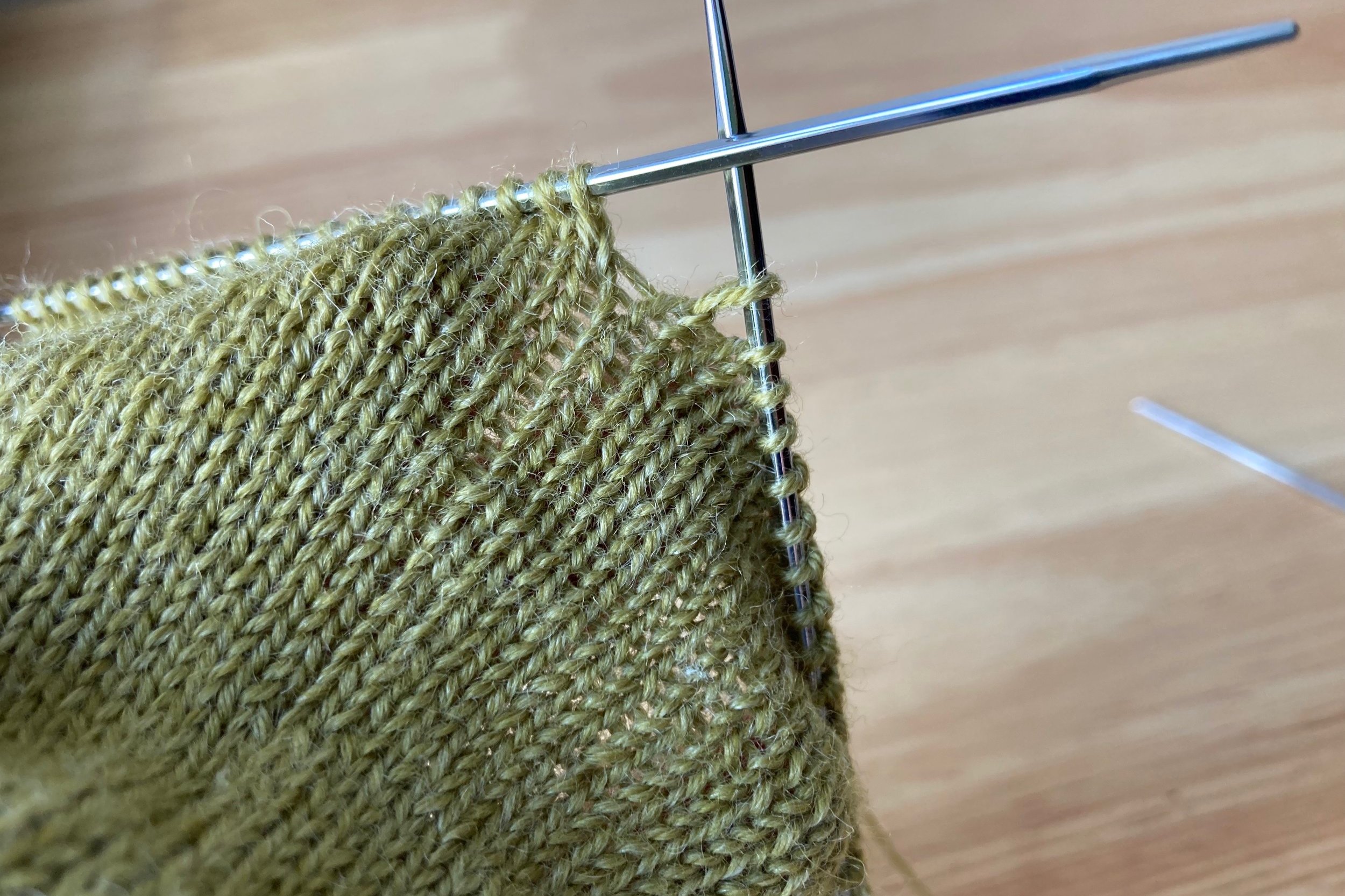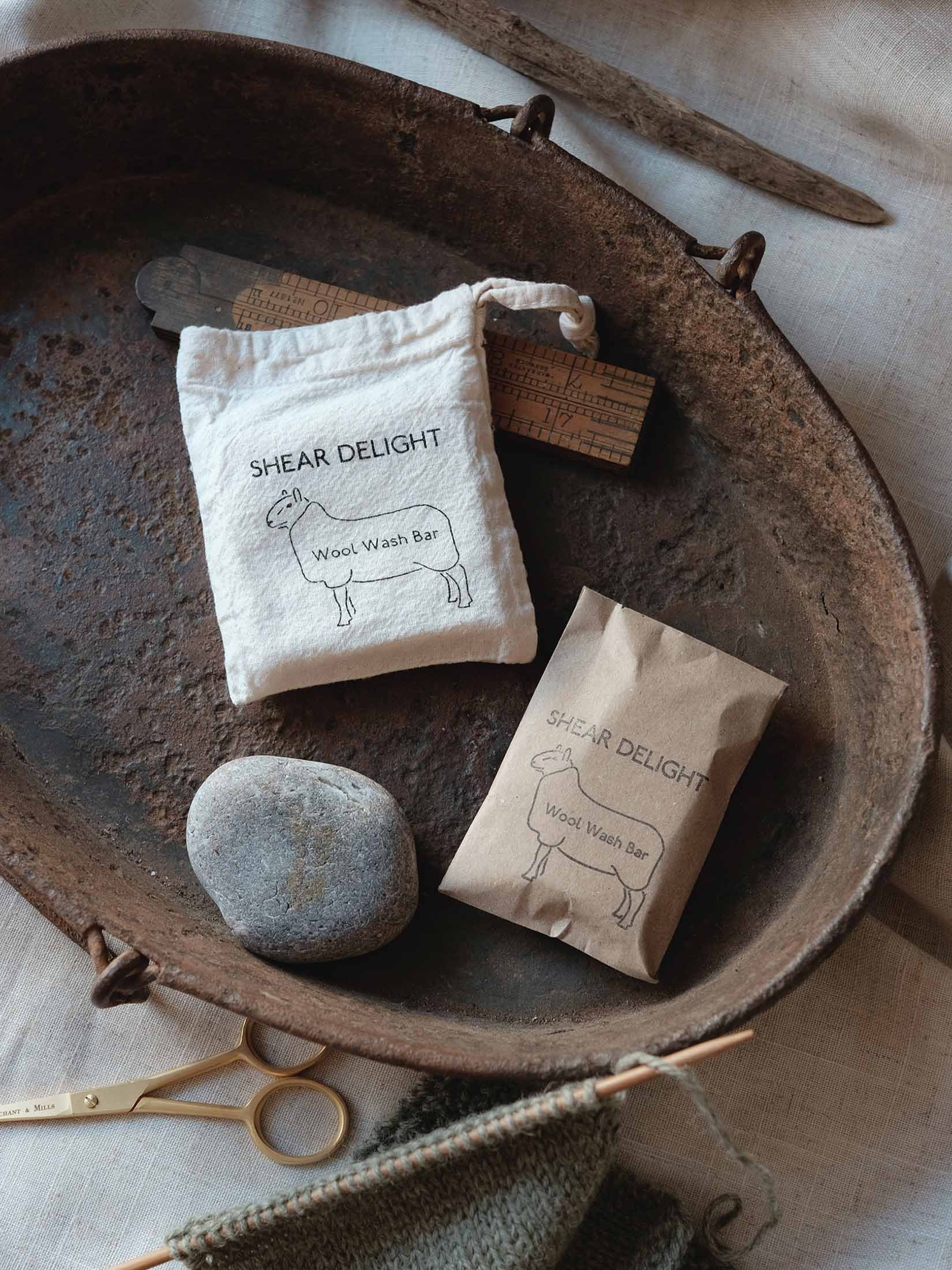Avoiding Ladders When Knitting in the Round
Ladders are stretched stitches that form between needles when knitting in the round. They are a really common problem when knitting small circumference items, such as socks, on double pointed needles or using magic loop.
A ladder forming when knitting a sock on double pointed needles.
Ladders happen when you change from one needle to another and extra yarn is needed to get across the gap. If this happens on every row, it can appear as a series of horizontal bars between the two columns of stitches. Alternatively, the extra yarn can get taken into the first stitch on the new needle, making that stitch bigger and forming a column of larger stitches. .
Here are some tips and tricks to combat ladders in your knitting:
Focus on Even Tension
Avoid pulling tight on the last stitch on a needle, or the first stitch on a new needle. This seems counter-intuitive, but it is uneven tension at the join between needles that causes ladders, so pulling the stitches tight on either side could make it even worse. It’s particularly easy to pull the last stitch on a needle too tight when using magic loop as when you move onto the next stitch you will be pulling the previous one tight around the (thinner) cable, rather than the needle.
You could try pulling tight on the second stitch after a join, as this might help even up tension if the first stitch is too loose. However, the ladder may have a different cause depending on whether your stitches are naturally quite tight or quite loose, so it’s safer to just try to make the tension as even as possible on all stitches, including those on either side of the join.
Hold Stitches Close Together
Make sure that the front and the back needle are close when moving from one to the other. With magic loop you can pinch the cable holding the back stitches to meet the new needle, and for DPNs the two needles will probably need to be crossing over each other at an angle. Keep the stitches as close as you can to the tip of each needle without them falling off.
Block
Blocking your knitting will help to relax and settle the stitches and will probably even them out a bit. See our How to Block Socks tutorial for full instructions.
Don’t Start a New Needle with a Purl Stitch
Purl stitches require a little more yarn than knit stitches, and bringing the yarn to the front of the work also uses extra yarn. So ladders are more likely to form if you start a new needle with a purl rather than a knit.
If working a section of stockinette or reverse stockinette over a join, keep the knit side to the outside of your work. This way the yarn will travel round the inside of the circumference rather than the outside, and will have less distance to travel between needles.
Change Your Needles
Everyone holds their needles differently, so changing from DPNs to magic loop or vice versa may reduce the chance of ladders forming. You might also try needles made from different materials. Wooden needles grip yarn better than metal ones, so some knitters might find that they make it easier to avoid ladders.
If you’re knitting with four double pointed needles, (three holding the stitches and one knitting), try switching to five. This will increase the angle between the needles as you swap between them and make it easier to pull the tips closer together.
You could also try switching to flexible double pointed needles, which are sort of a hybrid between DPNs and circular needles. They have short flexible cables, which mean that you can angle the needle tips to make switching needles easier. You also hold your knitting on two needles, which means fewer needle swaps than with traditional DPNs. We love HiyaHiya’s Flyer needles for knitting socks without ladders.
Rearrange Stitches
If you’re using double pointed needles you can rearrange the stitches between rows. Once you’ve knitted all the stitches on one needle, use the working needle to knit the first stitch on the next needle. If you do this each time, the stitches on either side of the joins will continually shift around your work. So even if you do have uneven stitches at joins, they won’t be stacked up on top of each other, and will be less noticeable. Make sure you use a stitch marker to keep track of where the end of the round is if you use this method.
Don’t Worry About It
This is one of those things that will go away with practice. The more you knit, the better you will become at keeping the tension even as you swap needles. Also items like socks which have some amount of negative ease will be stretched repeatedly as they’re worn, which will go some way towards evening out the stitches. In the meantime, don’t worry too much about the ladders. They’re not making going to cause any problems with your finished garment, and chances are nobody else will notice them anyway!
Other Causes of Ladders
Finally, ladders can also happen when you’re not actually switching between needles, but if there’s something in the way of your knitting which causes extra yarn to be used between stitches. Most commonly this will be a stitch marker. The way to avoid this type of ladder is to use stitch markers that aren’t too bulky. Our range of Merchant and Mills bulb pin stitch markers are perfect as they are really thin, so won’t need any extra yarn to get round them in your knitting. See them here.













